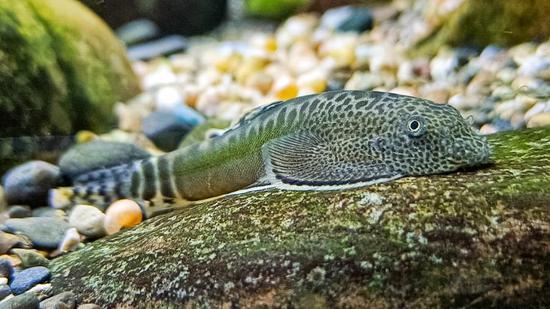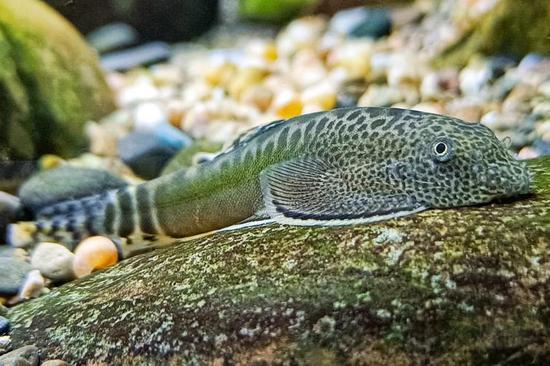Shanghai research team discovers two new species of fish

A Beaufortia viridis lays on the stone in a mountain stream in southwestern China. (Provided to chinadaily.com.cn)
A research team from Shanghai published their latest research findings on two new species of fish in Zoosystematics and Evolution, an internationally renowned zoological journal, on July 9.
Led by Tang Wenqiao, a professor from the School of Fisheries and Life Sciences at Shanghai Ocean University, the team discovered and named two hillstream loaches from Southwest China, namely, Beaufortia granulopinna and Beaufortia viridis.
The two species are currently only distributed in mountain streams from central Guangxi Zhuang autonomous region to western Yunnan province, which are endemic to China.
Both species share the characteristics of the Beaufortia pingi species group, including prominent vertical stripes on the lateral body and pinnate-type lower lips, distinguishing them from other Beaufortia species.
The discovery originated two years ago when several marine life enthusiasts found a peculiar-looking fish with a dark green body and zebra-like black stripes in a mountain stream.
In order to classify the fish, Tang's team went to investigate its origin. Team members collected specimens in the wild and brought them back to the school laboratory for photography, morphological measurements, and DNA extraction.
After mitochondrial cytb gene sequencing, the team found that the interspecific genetic distance between this fish and its closest known species is 5.2 percent. The interspecific genetic distance is an important indicator used to measure the degree of genetic differentiation between species or between different populations of the same species. The 5.2 percent genetic differentiation far exceeds the degree of difference between the most known species within the same population, which proves this fish to be a new species. Therefore, the team named it Beaufortia viridis.
Meanwhile, another fish, with prominent tubercles on the first six to nine pectoral fin rays in adults, was discovered by the team in the border area between Yunnan province and the Guangxi Zhuang autonomous region.
The minimum interspecific genetic distance between this fish and the Beaufortia pingi species group based on mitochondrial cytb gene sequences is 11.15 percent, which indicates a high degree of genetic differentiation, according to Tang. Thus, this fish was named Beaufortia Granulopinna.

